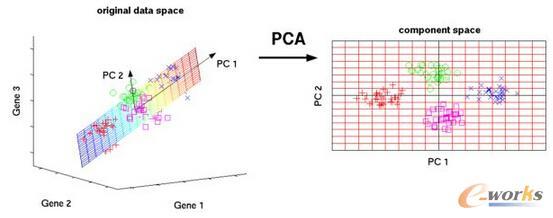Early prediction of pathological complete response (pCR) following neoadjuvant chemotherapy (NAC) for breast cancer plays a critical role in surgical planning and optimizing treatment strategies. Recently, machine and deep-learning based methods were suggested for early pCR prediction from multi-parametric MRI (mp-MRI) data including dynamic contrast-enhanced MRI and diffusion-weighted MRI (DWI) with moderate success. We introduce PD-DWI, a physiologically decomposed DWI machine-learning model to predict pCR from DWI and clinical data. Our model first decomposes the raw DWI data into the various physiological cues that are influencing the DWI signal and then uses the decomposed data, in addition to clinical variables, as the input features of a radiomics-based XGBoost model. We demonstrated the added-value of our PD-DWI model over conventional machine-learning approaches for pCR prediction from mp-MRI data using the publicly available Breast Multi-parametric MRI for prediction of NAC Response (BMMR2) challenge. Our model substantially improves the area under the curve (AUC), compared to the current best result on the leaderboard (0.8849 vs. 0.8397) for the challenge test set. PD-DWI has the potential to improve prediction of pCR following NAC for breast cancer, reduce overall mp-MRI acquisition times and eliminate the need for contrast-agent injection.
翻译:最近,我们的第一个模型将原始DWI数据分解到影响DWI信号的各种生理线索中,然后除临床变量外,还采用分解的数据,作为基于放射的XGBoost模型的输入特征。我们展示了我们的PD-DWI模型在常规机器学习方法基础上的附加价值,以便利用可公开获得的乳腺癌多分数的MRI数据从mp-MRI数据预测pCR(BMR2)预测NAC反应(BMR2),我们用模型大大改进了目前BSR-DR-DR(BC)-RIA(BR)系统后的挑战。




